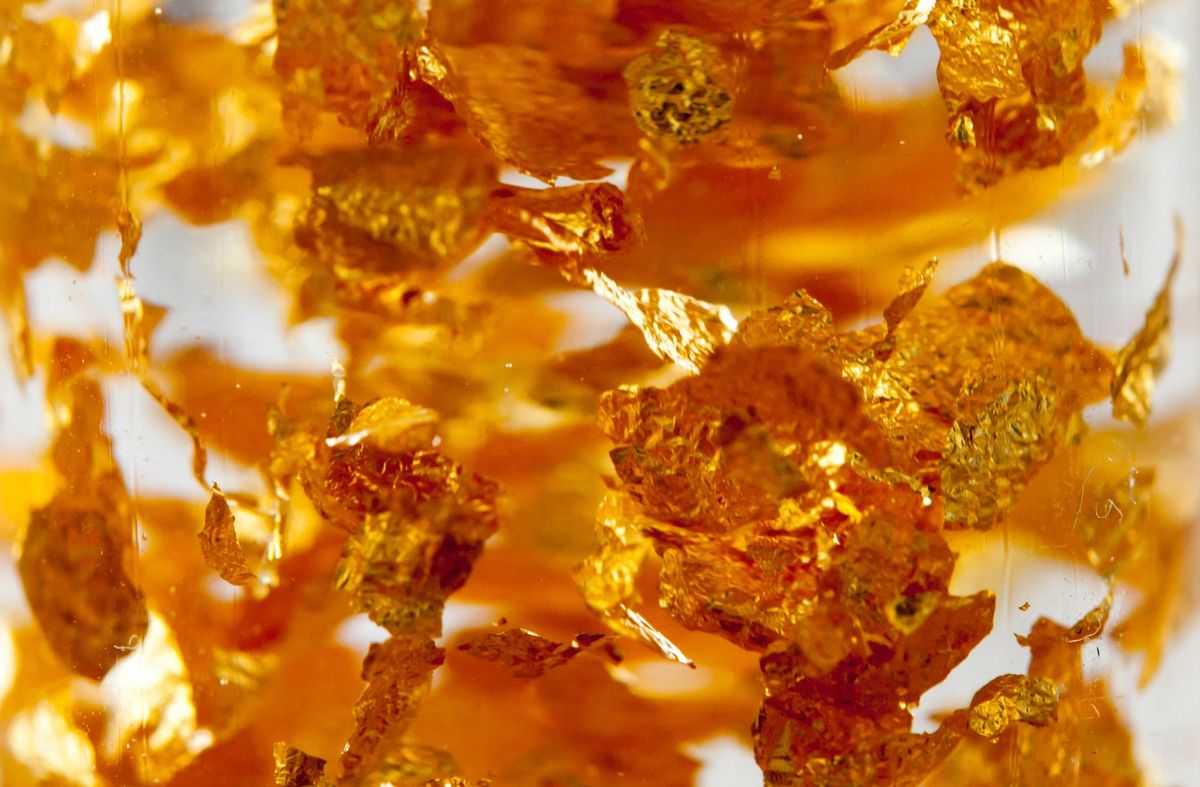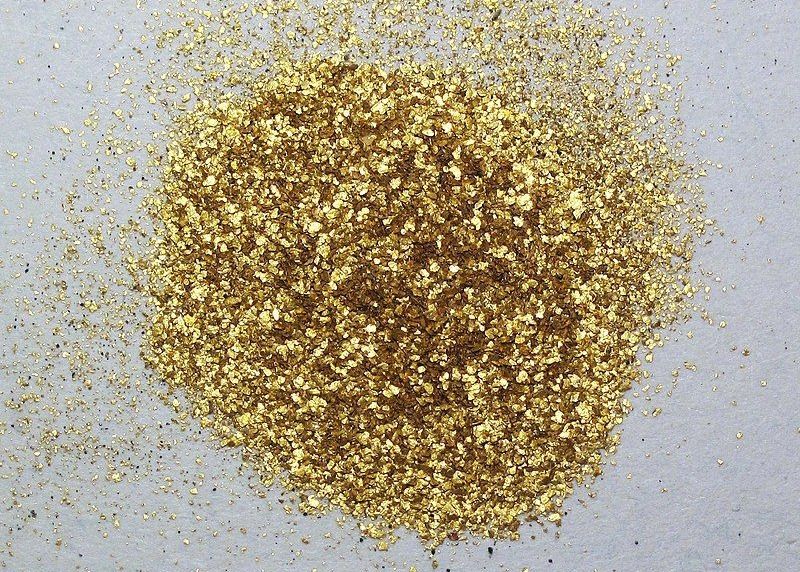Edible Gold: Exploring Its Premium Price
Discover how edible gold is crafted and see how even a small touch can elevate your culinary creations, turning every moment into a luxurious experience.

Golden culinary creations are capturing the spotlight. Chefs are weaving magic with gold-accented chocolates and cocktails, pushing the boundaries of luxury.
New York City boasts a gourmet food truck's unique offering: the $666 Douche Burger.
A decadent blend of truffles, caviar, lobster, and top-tier beef, wrapped in gold leaf, served on a soft brioche bun, it stakes its claim as the city's most luxurious burger.
Amidst this gold-dusted culinary trend, Kanazawa stands prominently at the forefront.
What is Edible Gold?
Edible gold is a culinary luxury safe for consumption, primarily utilized for elevating the aesthetics of food and beverages.
As a biologically inert substance, it passes through the digestive system without absorption. From adorning desserts like cakes to garnishing entrées like risotto and even adding a shimmer to drinks, its uses are diverse.
History and Origin
Gold has been consumed as a delicacy for millennia. The ancient Egyptians believed in the therapeutic properties of gold, and it was used in various potions to rejuvenate and restore youth.
During the Renaissance in Europe, alchemists would mix gold in elixirs believing it to be the source of eternal youth. In Asia, particularly in China and India, gold was often added to fruit, tea, and wine for medicinal purposes and as a status symbol.

Flavor Profile
Pure gold is chemically inert and does not have a taste, aroma, or flavor. Hence, the edible gold leaf itself is tasteless. Its allure lies not in its taste but in its aesthetic appeal, texture, and the luxurious experience it provides.
Edible Gold in Diverse Forms
- Gold Leaf: Thin sheets often used to garnish dishes, like gilded cakes or sushi.
- Gold Flakes: Tiny pieces perfect for sprinkling on desserts or in lavish cocktails.
- Gold Crumbs: Larger than flakes, ideal for adding a touch of luxury without overshadowing the dish.
- Gold Powder: Fine, shimmering powder mixed into drinks, sauces, or dusted atop dishes for a subtle gleam.
What is the Costs of Edible Gold?
Despite its featherlight weight of just 4 grams, a set of ten 3x3 inch sheets of 24k genuine gold leaf typically costs between $40 to $50.
Similarly, a mere 30-milligram bottle of edible gold flakes commands a price tag of around $30.
The lightness paired with such prices underscores the preciousness of these golden culinary delights.
Golden Gastronomy of Kanazawa's Edible Gold Leaf
Kanazawa, often dubbed "Little Kyoto" for its enchanting gardens, is Japan's gold leaf heartland, crafting an impressive 98% of the nation's supply.
The edible gold leaf, known as 'maiko' in Japan, is applied to foods like sushi or ice cream using a meticulous method.
With the support of blotting paper, this wafer-thin gold is placed atop delicacies with precision. As the paper is removed, the gold seamlessly clings to the food's surface, melting on hot items and freezing on cold.
This transformative touch, though tasteless, adds a dash of luxury and is entirely safe to consume.
Why is Edible Gold so Expensive?
Purity
Edible gold should be almost pure gold, typically 22-24 karats. Any lesser purity might mean the presence of other metals that aren't safe to eat. Kanazawa edible gold adheres to these standards to ensure the product is safe for consumption.
The Intricate Journey of Kanazawa's Gold Leaf Creation
The intricate process of producing Kanazawa's coveted gold leaf can be outlined in six main steps:
- Formulation & Melting (Kane-awase): Pure gold, due to its soft nature, is alloyed with traces of silver and copper to ensure durability and control its final hue. These metals are melted together at approximately 1,300°C and cast into molds.
- Rolling Out (Nobe-gane): The combined ingot undergoes multiple stretching sessions in a roller to attain a thickness of around 0.02-0.03 mm. The resulting thin metal sheet is sectioned into 6 cm squares, known as "koppe."
- Preliminary Pounding (Zumi-uchi): These koppe squares are then meticulously hammered between paper layers, increasing their size and reducing thickness step by step: from "aragane" to "koju" to "oju" and finally "uwazumi," achieving a slimness of about 0.003 mm.
- Placing between Paper (Hiki-ire): Each uwazumi is divided into 12 squares or "koma," which are further hammered to a thickness of 0.001-0.002 mm.
- Final Pounding (Uchi-mae): The resultant "zumi" is sandwiched between specialized pounding paper, known as "kami-shikomi"—a durable Japanese paper treated with egg or persimmon tannin mixtures—and hammered to a mere 0.0001 mm thinness. The paper's quality plays a pivotal role in determining the gold leaf's final quality.
- Transfer (Nukishigoto & Haku-utsushi): The gossamer-thin gold leaf undergoes quality inspection while being carefully transferred between sheets of Japanese paper. Bamboo tools are preferred due to their anti-static properties. Finally, the gold leaf is trimmed to standard sizes using a bamboo frame, resulting in gold leaf sheets ready for use.
Safety Standards
Edible gold leaf undergoes strict quality control to ensure that it's free from impurities and safe for consumption.
Interesting Facts
- Oldest Edible Gold Artifact: The oldest record of edible gold consumption dates back to the ancient Egyptians, where they decorated foods and drinks with gold to honor the gods.
- Digestion: While gold is non-toxic, the human body doesn't absorb it. So, after consumption, it's excreted without undergoing any change.
- Calories: Edible gold leaf has no calories, making it the most opulent zero-calorie garnish.
Edible vs. Non-Edible Gold Leaf
To determine if a gold leaf is edible:
- Purity: Check for a purity of 22-24 karats for edible gold. Any lesser purity might mean the presence of other metals that aren't safe to eat.
- Certification: Look for certifications or labels indicating it's safe for consumption. Often termed as "food grade" or "culinary gold." It's essential to verify that it's the kind approved by both the European Union and the United States for use as a food additive, identified under the designation E 175.
- Absence of Chemicals: Non-edible gold leaves might be treated with chemicals or dyes that aren't safe for ingestion.
Utilizing Edible Gold for Culinary Creations
- Golden Beverages: Elevate your cocktails by introducing gold flakes. Drinks like the "Golden Elixir" or the "Lustrous Champagne Splash" can be showstoppers at any gathering.
- Dessert Garnish: Adorn cakes, cookies, and pastries with gold leaf for a regal touch. Consider adding gold accents to chocolate truffles or macarons for that extra sparkle.
- Savory Dishes: Surprise your guests by adding a gold leaf to dishes like risotto, grilled steaks, or even pizza. The contrast of the gold against savory foods can be visually stunning.
- Soup Accent: Introduce a shimmer to broths or creamy soups with a dash of gold flakes, turning a simple dish into a gourmet experience.
- Golden Sushi: Elevate sushi rolls or sashimi by layering them with thin sheets of gold.
- Bread and Pastries: Make your morning croissants or bread rolls stand out by brushing them with gold leaf before baking.
- Celebratory Drinks: Add gold flecks to champagne toasts during special occasions, ensuring every sip feels extraordinary.
Concluding Thoughts
With a modest investment, you can elevate your desserts, add sparkle to your drinks, or give appetizers an opulent touch. If you've thought about dabbling with genuine gold leaf, consider starting with a small amount.
Remember, these gold sheets, while paper-thin, are often limited in size, making it a precious addition to your culinary repertoire.


